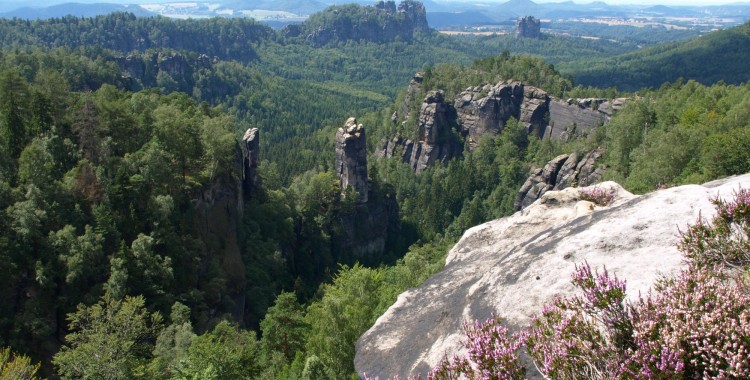Deep forests, inaccessible rock towers and faces, sunny slopes, moist gorges, small and large streams, a harmonious cultural landscape and human settlements – altogether they form a colorful mosaic of habitats, which are closely interlinked: diversity in a most confined space. Among the landscapes of Central Europe the Elbe Sandstone Mountains (Saxon-Bohemian Switzerland) occupy a special niche.
Rocky mountains
These rocky mountains are part of an eroded landscape, consisting of a cuboid (quartz) sandstone layer formed during the Cretaceous (Cenomanian) period. This layer is heavily dissected and over 600 m thick. This unique rocky landscape was shaped by the erosion of the Elbe river and its tributaries. Deeply carved out valleys and canyons with montane flora and fauna represent real mountainous elements, although the landscape is classified by its altitude as hilly landscape.
The climate “upside down”
The great vertical division of the Elbe Sandstone Mountains causes an interesting ecological peculiarity: The so-called “climatic inversion”. This is seen in the fact that the Central European forest elevations are arranged vice versa (vegetation inversion). Plants adapted to great heights grow in deep canyons here.












